Why One Office Zone is Too Humid & How a Humidity Transmitter Fixes It ?
Why One Office Zone is Too Humid & How a Humidity Transmitter Fixes It Persistent
HG808 Sereris
Strona główna " Czujnik wilgotności wysokiej temperatury
The Seria HG808-T to zaawansowany przemysłowy przetwornik temperatury i wilgotności firmy HENGKO, skrupulatnie zaprojektowany z myślą o Ciągłe monitorowanie w ekstremalnie wysokich temperaturach do 200°C. Zaprojektowany do trudnych zastosowań, takich jak piece, piece przemysłowe i rurociągi gazów spalinowychModel ten zapewnia długoterminową stabilność pomiaru i trwałość tam, gdzie konwencjonalne czujniki zawodzą.
Wyposażony w Wysokowydajna sonda ze stali nierdzewnej 316LHG808-T zapewnia niezawodne pomiary nawet w środowiskach o silnym promieniowaniu cieplnym, lotnych gazach lub przepływach spalin obciążonych cząstkami stałymi. Oferuje wyjątkowa dokładność ±0,1°C i ±2% RHnawet w warunkach szoku termicznego i gwałtownych zmian środowiskowych.
Niezależnie od tego, czy monitorujesz powietrze procesowe w systemach spalania, suszarniach wysokotemperaturowych czy przemysłowych wylotach spalin, HG808-T zapewnia bezkompromisowe rozwiązanie dla Kontrola środowiska w czasie rzeczywistym, bezpieczeństwo procesóworaz zgodność z przemysłowymi normami jakości.
| Model | Według warunków aplikacji | Kluczowe cechy |
|---|---|---|
| HG808-T | Ciągła praca w środowiskach o wysokiej temperaturze (piece, piekarniki, spaliny) | - Pomiary do 180°C - Sonda ze stali nierdzewnej - Długoterminowa stabilność |
HENGKO oferuje szeroką gamę przemysłowych czujników temperatury i wilgotności odpowiednich do różnych potrzeb monitorowania, począwszy od Sondy czujników ze stali nierdzewnej do przetworniki punktu rosy i 6 rodzajów urządzeń do monitorowania temperatury i wilgotności. Skupiamy się na dostarczaniu dokładnych, niezawodnych i trwałych czujników, dzięki czemu są one idealne do różnorodnych zastosowań. Oto lista naszej serii HG808, sprawdź szczegóły w następujący sposób.
HG808 oferuje również specjalistyczne rozwiązania do monitorowania punktu rosy dostosowane do wymagających środowisk przemysłowych - w tym wysoka temperatura, wysoka wilgotność, warunki korozyjneoraz narażenie chemiczne.
Zapoznaj się z poniższymi modelami, aby wybrać odpowiedni przetwornik wilgotności do konkretnych potrzeb.
| Model | Zakres temperatur (°C) | Zakres wilgotności (% RH) | Zakres punktu rosy (°C) | Dokładność temperatury (Temperatura / Wilgotność / Punkt rosy) |
Funkcje specjalne | Zastosowania |
|---|---|---|---|---|---|---|
| Seria HG808-T (Przetwornik wysokiej temperatury) |
-40 do +200 ℃ | 0-100% RH | NIE DOTYCZY | ±0.1°C (@85℃) / ±2%RH (@20℃, 10-90%RH) |
Element pomiarowy odporny na bardzo wysokie temperatury, sonda ze stali nierdzewnej 316L. Utrzymuje dobrą wydajność zbierania wilgoci nawet w wysokich temperaturach od 100°C do 200°C. |
Zbieranie danych o wilgotności z gazów o wysokiej temperaturze w różnych zastosowaniach takich jak piece piecowe, piece wysokotemperaturowe i rurociągi gazu koksowniczego. |
| Seria HG808-A (Ultra wysokotemperaturowy miernik punktu rosy) |
-80 do +180 ℃ | NIE DOTYCZY | -20 do +100 ℃ | ±3°C Td |
Zaprojektowany specjalnie do pomiaru punktu rosy w środowiskach o wysokiej temperaturze i suchości. Posiada solidną obudowę z odlewu aluminiowego i zespół czujnika ze stali nierdzewnej zapewniający dokładne pomiary do 190°C. |
Idealny do pomiaru punktu rosy w wymagających środowiskach o wysokiej temperaturze i suchości 190 ℃. |
Oferujemy 6 typów sond do przetwornika wilgotności HG808, przy czym każdy typ jest dostępny zarówno w wersji A, jak i B, zapewniając łącznie 12 sond do różnych zastosowań.


0A#

1A#

3A#

5A#

6A#

8A#


0B#

1B#

3B#

5B#

6B#

8B#


Złącze sondy ze stali nierdzewnej z gwintem sześciokątnym M20

G1/2 Złącze sondy ze stali nierdzewnej z gwintem sześciokątnym

NTP1/2 Złącze sondy ze stali nierdzewnej z gwintem sześciokątnym

Złącze sondy ze stali nierdzewnej z gwintem sześciokątnym M27

Złącze sondy M20 z kołnierzem ze stali nierdzewnej
HENGKO, jako wiodący dostawca fabryczny i OEM, oferuje 6 typów przetworników wilgotności, czujników i mierników z różnymi opcjami sond. Specjalizujemy się w dostarczaniu najlepszych rozwiązań do monitorowania temperatury i wilgotności dla różnorodnych zastosowań przemysłowych, zapewniając niezawodność i dostosowanie do konkretnych potrzeb.
HENGKO jest profesjonalnym dostawcą rozwiązań w zakresie przemysłowych czujników temperatury i wilgotności, cieszącym się reputacją unikalnego projektu i doskonałej wydajności.
Nasze przetworniki i czujniki temperatury i wilgotności są wykorzystywane w różnych branżach, takich jak żywność i napoje, farmaceutyka, produkcja i monitorowanie środowiska, zapewniając niezawodne i dokładne pomiary niezbędne do osiągnięcia sukcesu operacyjnego.
Dzięki 10-letniemu doświadczeniu technicznemu HENGKO i szerokiej gamie produktów do pomiaru wilgotności i punktu rosy można łatwo znaleźć najlepsze rozwiązania w zakresie temperatury i wilgotności dla niektórych specjalnych warunków monitorowania przemysłowego.
Otrzymasz znacznie niższą i konkurencyjną cenę dzięki naszej niezwykle opłacalnej kontroli i dostawom fabrycznym oraz bezpłatnej usłudze OEM i ODM
Dzięki naszym stale unowocześnianym przetwornikom wilgotności zawsze będziesz w stanie sprostać stale zmieniającym się potrzebom rynku.
Możesz w pełni dostosować unikalny produkt czujnika punktu rosy w oparciu o naszą opatentowaną i samodzielnie zaprojektowaną serię przetworników punktu rosy.
Otrzymasz silne wsparcie marketingowe, które pomoże Ci skutecznie sprzedawać produkty, materiały pomocnicze obejmują: zdjęcia produktów w wysokiej rozdzielczości, fajne filmy z efektami 3D i wiele więcej.










Jeśli jesteś zainteresowany współpracą z HENGKO jako dystrybutor lub agent sprzedaży naszych produktów z czujnikami temperatury i wilgotności,
Serdecznie zapraszamy do kontaktu w celu omówienia szczegółów. Czeka na Ciebie wiele ekskluzywnych możliwości.
Przetworniki wysokiej temperatury i wilgotności z czujnikami zdolnymi do pracy w temperaturze 200°C (392°F) mają kluczowe znaczenie w określonych środowiskach przemysłowych z kilku kluczowych powodów:
Ekstremalne monitorowanie procesów:
Wiele procesów przemysłowych działa w bardzo wysokich temperaturach. Przykłady obejmują:
Harsh Environment Data Collection:
Certain industrial settings are inherently hot and humid. These transmitters can gather reliable data in:
Specialized Material Compatibility:
Sensors designed for 200°C environments often use special materials to withstand the heat. This allows for accurate measurement in processes that might damage conventional sensors:
In essence, high-temperature and humidity transmitters with 200°C sensors are vital for industrial processes that demand precise control and data collection
in extremely hot and humid environments. Their ability to withstand harsh conditions and utilize specialized materials makes them irreplaceable for these demanding applications.
High temperature and humidity transmitters with sensors designed to handle up to 200°C (392°F) boast specific features that make them ideal for harsh industrial environments. Here are some key characteristics:
1. High-Temperature Resistance:
The primary feature is the sensor’s ability to withstand temperatures as high as 200°C. This is achieved through special materials like:
2. Accurate Humidity Measurement:
Even in hot environments, these sensors deliver precise readings of relative humidity. This is often achieved through:
3. Durable Construction:
The entire transmitter is built to endure the harsh conditions of industrial settings. This includes:
4. Output Signal Compatibility:
These transmitters provide industry-standard output signals for easy integration with data acquisition systems. Common outputs include:
5. Calibration Capabilities:
Many high-temperature and humidity transmitters offer calibration options to ensure long-term accuracy. This may involve:
In conclusion, high temperature and humidity transmitters with 200°C sensors are feature-rich instruments designed for the specific demands of hot
and humid industrial environments. Their ability to withstand extreme temperatures, deliver accurate measurements, and function reliably make them
valuable tools for process monitoring and control in various industrial sectors.
There are two main types of high temperature and humidity transmitters based on the sensing technology used:
1. Capacitive High Temperature and Humidity Transmitters:
These transmitters use a capacitive sensor to measure humidity. The sensor consists of two parallel plates separated by a hygroscopic material.
As humidity changes, the amount of moisture absorbed by the hygroscopic material changes, which in turn affects the capacitance between the plates.
This change in capacitance is measured electronically and converted into a humidity reading.
Zalety:
Disadvantages:
2. Resistive High Temperature and Humidity Transmitters:
These transmitters use a resistive sensor to measure humidity. The sensor consists of a polymer film that changes its electrical resistance
based on the amount of moisture absorbed. As humidity increases, the resistance of the film decreases, and vice versa. This change in resistance
is measured electronically and converted into a humidity reading.
Zalety:
Disadvantages:
The best type of high temperature and humidity transmitter for a particular application will depend on the specific requirements
of the application, such as the required accuracy, response time, and cost.
Here are some key factors to consider when choosing a high temperature and humidity transmitter for your industrial monitoring projects and systems:
1.Temperature Range:
2.Humidity Range:
3.Accuracy and Response Time:
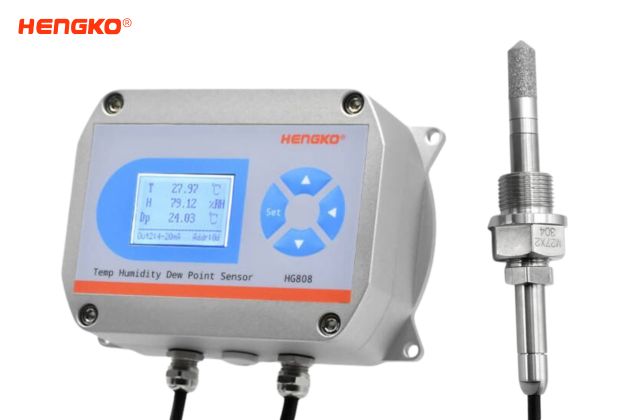
4.Environmental Conditions:
5.Output Signal:
6.Calibration:
7.Additional Considerations:
By carefully considering these factors, you can select a high temperature and humidity transmitter that is well-suited for your specific industrial monitoring project and system.
You can find industrial high temperature and humidity transmitters from various manufacturers, but HENGKO is certainly one option to consider. Here’s a breakdown to help you decide:
Where to Find High Temperature and Humidity Transmitters:
Why Consider HENGKO High Temperature and Humidity Transmitters:
HENGKO offers high temperature and humidity transmitters with sensors capable of withstanding up to 200°C,
making them suitable for various demanding industrial applications. Here are some reasons to consider their products:
Before Choosing HENGKO:
By considering these aspects, you can make an informed decision about whether a HENGKO high temperature and humidity transmitter is the right choice for your industrial monitoring project.
You’re right, industrial high temperature and humidity transmitters can be expensive. Here are some options to consider if price is a major concern:
| Brand | Model | Zakres temperatur (°C) | Humidity Range (%RH) | Sygnał wyjściowy | Price (USD) |
|---|---|---|---|---|---|
| HENGKO | HG808-T | -40 to 200℃ | 0 to 100 | 4-20mA, Modbuss RS485, 0-5V, 0-10V | $250 – $400 |
| Omega | HXNH-TH | -40 to 200 | 0 to 100 | 4-20mA, Modbus RTU | $300 – $500 |
| Dwyer Instruments | Series HTI | -40 to 177 | 0 to 100 | 4-20 mA | $200 – $350 |
| E+E Elektronik | EE360 | -20 to 200 | 0 to 100 | 0-10V, 4-20mA | $400 – $600 |
| Budget Option | (Various) | -20 to 150 | 0 to 100 | 4-20 mA | $100 – $200 |
Here’s why choosing a budget-friendly option might not always be best:
Ultimately, the decision depends on your specific needs and priorities. If accurate and reliable data acquisition is critical for your industrial process, a higher-quality transmitter might be a worthwhile investment despite the initial cost.
Skontaktuj się z HENGKO już dziś, aby uzyskać odpowiedzi na wszelkie pytania dotyczące czujników temperatury i wilgotności, przetworników i rozwiązań.
Why One Office Zone is Too Humid & How a Humidity Transmitter Fixes It Persistent
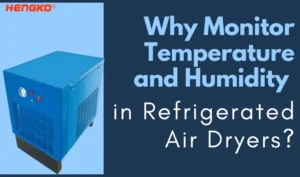
Introduction Compressed air is often referred to as the “fourth utility” in modern industry, alongside
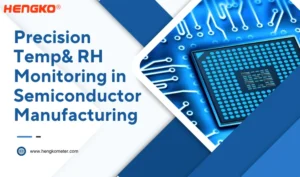
1. Introduction The semiconductor industry operates under some of the most stringent environmental conditions of
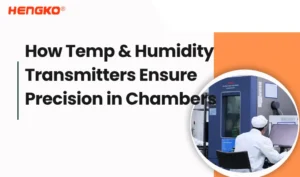
Wprowadzenie W świecie symulacji środowiskowych i testów niezawodności, komory o stałej temperaturze i wilgotności
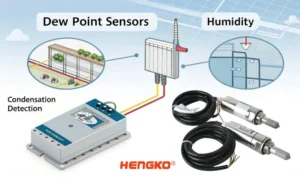
Zastanawiasz się, jak czujniki punktu rosy wpływają na wydajność przemysłową? Czujniki te odgrywają
Skontaktuj się z naszym zespołem ekspertów, aby uzyskać spersonalizowaną pomoc, a my niezwłocznie dostarczymy najlepsze rozwiązania w zakresie przetworników i czujników temperatury i wilgotności dostosowane do Twoich konkretnych potrzeb.

Let us tell you why you should choose a dew point transmitter
from HENGKO
Odpowiedź jest prosta: HENGKO jest inne.
Why One Office Zone is Too Humid & How a Humidity Transmitter Fixes It Persistent humidity in one office zone can disrupt comfort, increase mold
Why One Office Zone is Too Humid & How a
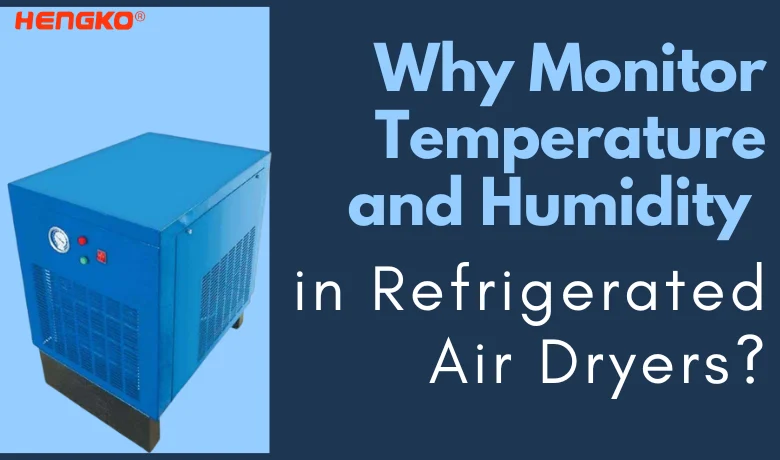
Introduction Compressed air is often referred to as the “fourth

1. Introduction The semiconductor industry operates under some of the